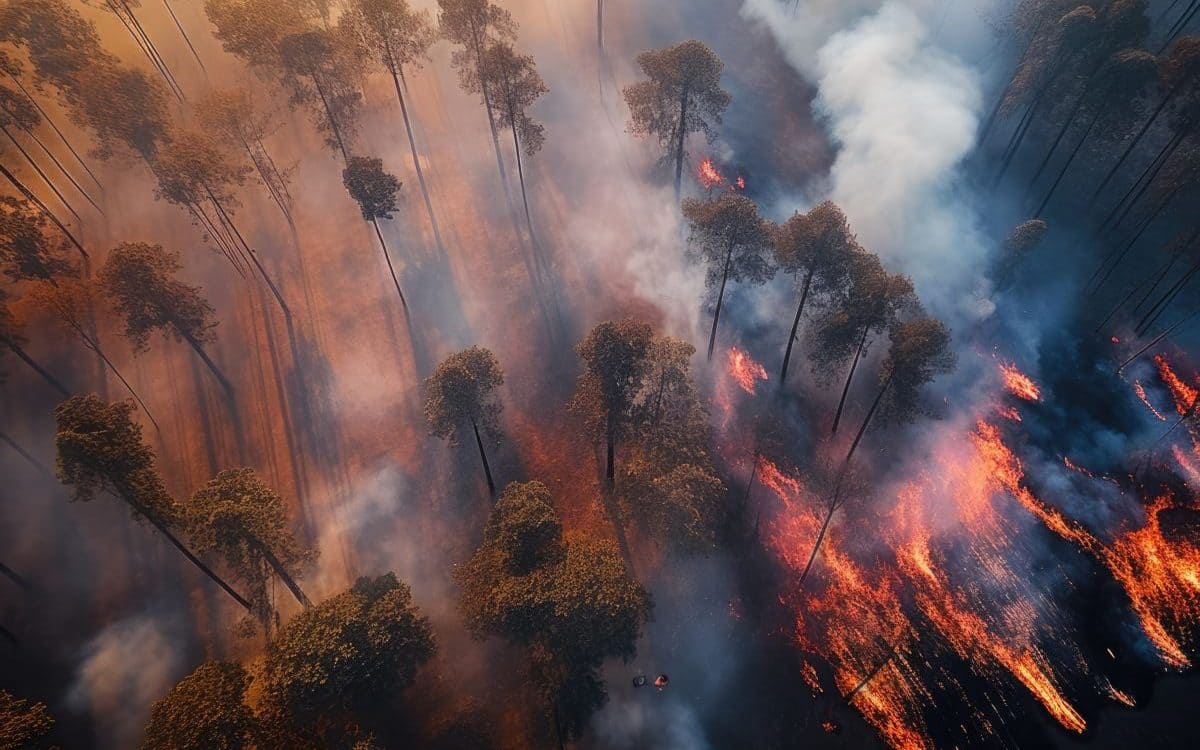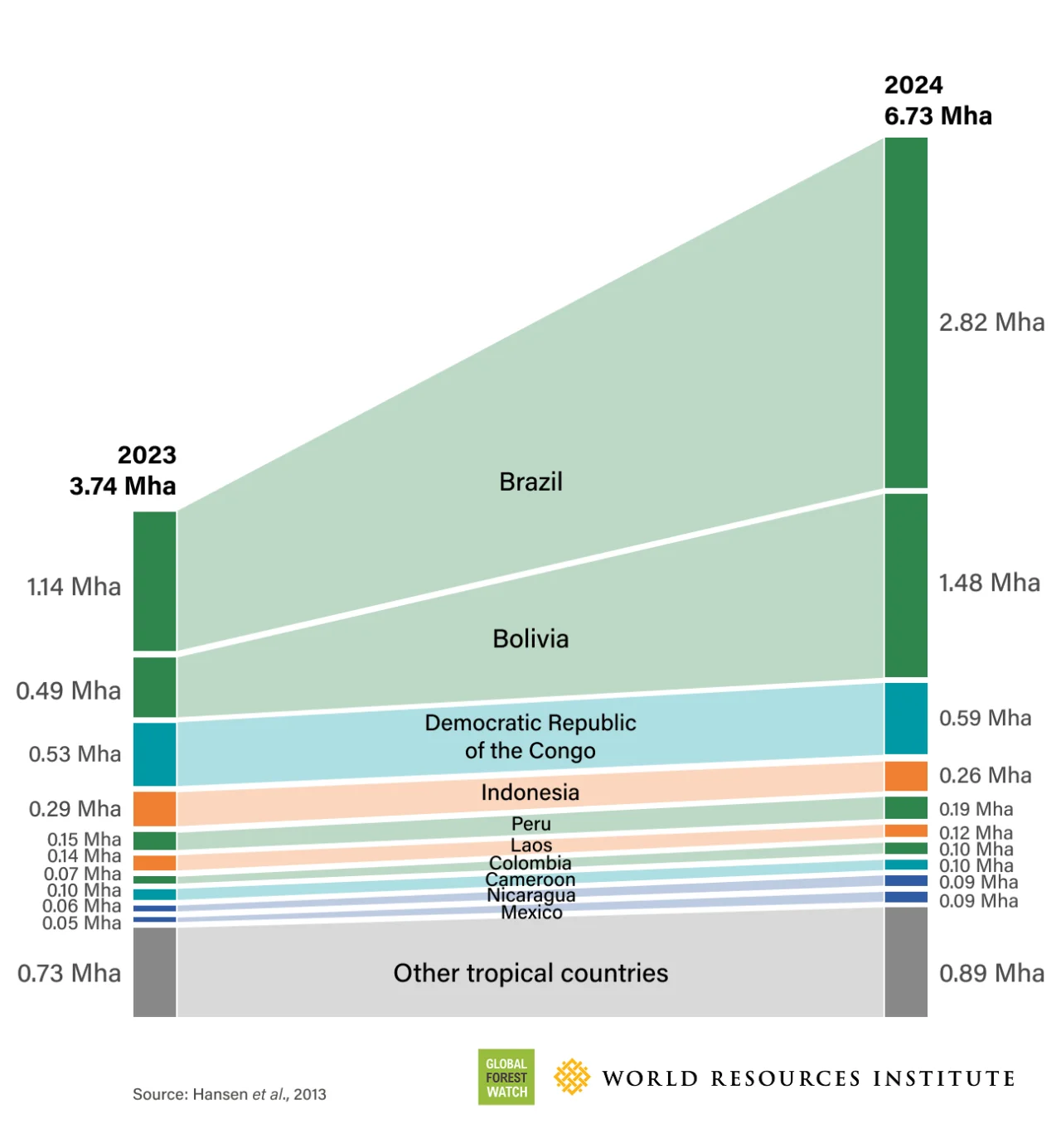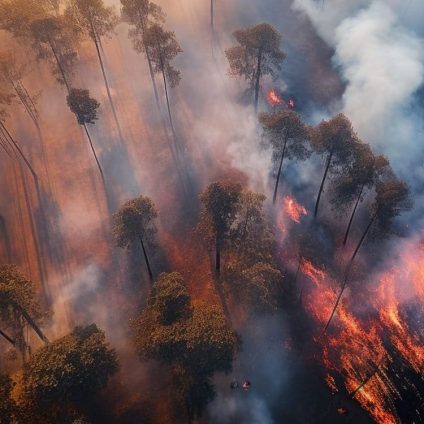The Amazon biome, in particular, experienced its highest forest loss since 2016.

By Erminia Voccia
Tropical forests face unprecedented fire damage due to climate change
Wildfires driven by global warming surged to record levels in 2024 across tropical forests, where such fires are rare under natural conditions. Last year, we lost 6.7 million hectares of primary tropical forest, an area nearly the size of Panama. Most of this destruction was due to fire—more than in any year over the past two decades. The warning comes from the University of Maryland and the World Resources Institute.
The extent of primary tropical forest destroyed by fire in 2024 was five times higher than in 2023. While wildfires can occur naturally in some ecosystems, those in tropical forests are almost entirely human-caused. They often start on deforested land used for agriculture and quickly spread unchecked into nearby forested areas. The year 2024 was the hottest ever recorded. High temperatures and prolonged drought, both linked to climate change, fueled larger and more frequent fires.
Read also: Primary tropical forest destruction devours an area as large as Holland

Amazon rainforest sees largest tropical forest loss
Latin America was hit the hardest, according to the report. The Amazon biome in particular experienced its most severe forest loss since 2016. While tropical forests have the capacity to regenerate, global warming and agriculture-driven deforestation increasingly hinder that recovery—and raise the risk of future fires.
Brazil topped the list for tropical forest loss, with 2.8 million hectares destroyed in 2024. That figure is especially high because Brazil holds more primary tropical forest than any other country. The past year was also marked by extreme drought. In fact, Brazil experienced its worst dry season in 70 years, which helped fires spread faster and further than ever before.
Bolivia and the Congo face alarming forest destruction
For the first time, Bolivia ranked second after Brazil, surpassing the Democratic Republic of the Congo. Bolivia’s figures are alarming: a 200% increase in forest loss compared to 2024. And 2023 had already been the worst year for tree loss. Drought conditions were especially severe, with nearly 12% of Bolivia’s territory burned by wildfires.
Much of this destruction was linked to deforestation for livestock grazing and to clear land for monoculture farming—including industrial-scale production of soy, sugarcane, and sorghum.
Armed conflicts among local groups contributed to the Democratic Republic of the Congo’s forest losses in 2024, as timber was used to meet energy needs. Meanwhile, Colombia showed a worrying reversal: after a brief improvement from 2023 to 2024, the country saw forest degradation rise again.












